“Bioinspired electronic whisker (e-whisker) arrays fabricated using pencil on paper are demonstrated for adaptive tactile sensing. The pencil-drawn e-whisker arrays with superior strain sensitivity, fast response (50 ms) and high durability/stability enable to monitor strains, build 3D spatial maps and detailed reconstruct objects’ […]
Recent biological studies on water strider insects revealed how they maintain stability and maneuver on the surface of water. While macroscale bodies use buoyancy, these very small insects use surface tension force to balance their weight on water. This paper proposes a biologically inspired miniature robot that […]
Transitions to terrestriality have been associated with major animal radiations including land snails and slugs in Stylommatophora (>20 000 described species), the most successful lineage of ‘pulmonates’ (a non-monophyletic assemblage of air-breathing gastropods). However, phylogenomic studies have failed to robustly resolve relationships among traditional pulmonates and affiliated marine lineages that comprise […]
According to this article, friction is an underappreciated problem in engineering, as it is often responsible for great energy loss within machines and robots. But, in order to combat this, researchers looked into snake skin as a potential model for a new synthetic material to reduce friction. In the most recent […]
“Inspired by the functional microstructure of the ant nest, a humidity control material was prepared by the sintering of modified low-grade sepiolite. A hierarchical porous structure accelerates the diffusion of water vapor. Meanwhile, CaCl2 was applied subtly to enhance absorption/desorption of water vapor […]
“Scientists from the University of California, Davis, discovered that redwood trees have two types of leaves, and those leaves have completely different jobs… Together, these functionally distinct leaves allow the world’s tallest trees to thrive in both wet and dry parts of their range in California, without […]
Reversing the developmental clock on adult brain cells
A single protein can reverse the developmental clock on adult brain cells called astrocytes, morphing them into stem-like cells that produce neurons and other cell types, UT Southwestern researchers report in a new study. The findings might someday lead to a way to regenerate brain tissue after disease or injury.
Centimetre-scale fliers must contend with the high power requirements of flapping flight. Insects have elastic elements in their thoraxes which may reduce the inertial costs of their flapping wings. Matching wingbeat frequency to a mechanical resonance can be energetically favourable, but also poses control challenges. Many insects use frequency modulation on […]
This beautiful shrub is native to Europe, North Africa, and West Asia. It is one of the best-known poisonous plants from ancient Egypt to the Middle Ages up until now. It is the ancient Egyptians they were responsible for promoting its use as a powerful narcotic.
The toxins responsible for its […]
Engineers at Rutgers University have invented a 3D-printable hydrogel that senses a change in light and consequently changes shape. It is inspired by the color-changing skin of cuttlefish, octopus, and squid, and it is meant to function as a type of artificial muscle. The main design inspiration was modeled after a […]
Peacock Feathers Inspire Opal-Like Smart Sensors
An international team of scientists has developed an innovative opal-like material inspired by butterfly wings and peacock feathers. Graphene’s reaction to such conditions include changing color from green to blue when stretched and turning transparent when heated. Regularly interspersing a tiny amount of the “wonder-material” graphene throughout their polymer-based opals unlocked […]
News, Nanofoam discovered in pollen could power cars and save lives
Researchers from the Natural History Museum have “worked alongside a group of materials scientists to investigate the properties of the pollen wall, including its smoothness, flexibility and chemical makeup. These were then compared between modern and fossilised pollen.
The researchers found that the pollen walls contained a significant amount of calcium, […]
“Distributed search problems are ubiquitous in Artificial Life (ALife). Many distributed search problems require identifying a rare and previously unseen event and producing a rapid response. This challenge amounts to finding and removing an unknown needle in a very large haystack. Traditional computational search models are unlikely to find, nonetheless, appropriately […]
Learn about our two Decals!
 Click here to find out more about our Fall Bioinspired Design Decal and our Spring Bioinspired Design in Action Decal – ALL MAJORS are welcome.
Click here to find out more about our Fall Bioinspired Design Decal and our Spring Bioinspired Design in Action Decal – ALL MAJORS are welcome.Berkeley BioDesign Community
 Click here to learn about the BioD: Bio-Inspired Design @ Berkeley student organization or here to signup for more info.
Click here to learn about the BioD: Bio-Inspired Design @ Berkeley student organization or here to signup for more info.Search
Student Login

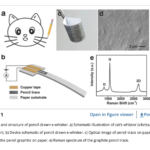


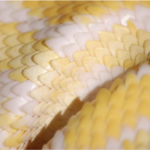
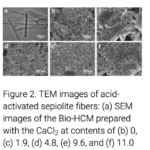
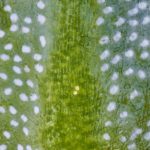

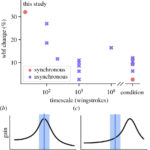


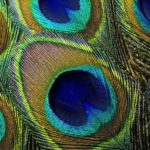
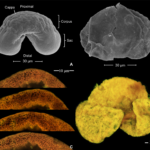
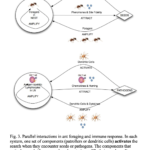


I imagine that the neurological circuits underlying these processes are governed by both 2d spacing maps with their brains as…
to reduce the impact of car accidents, it may be possible to study the force diverting physics of cockroaches to…
you see this type of head-bobbing stability in many avian creatures related to pigeons like chickens. the head ability to…
not like they taught horses how to run! this is an example of convergent evolution where both sea creatures and…
The brain functions in a similar way with neuronal connections. our brains are able to utilize the multiplicity of connections…